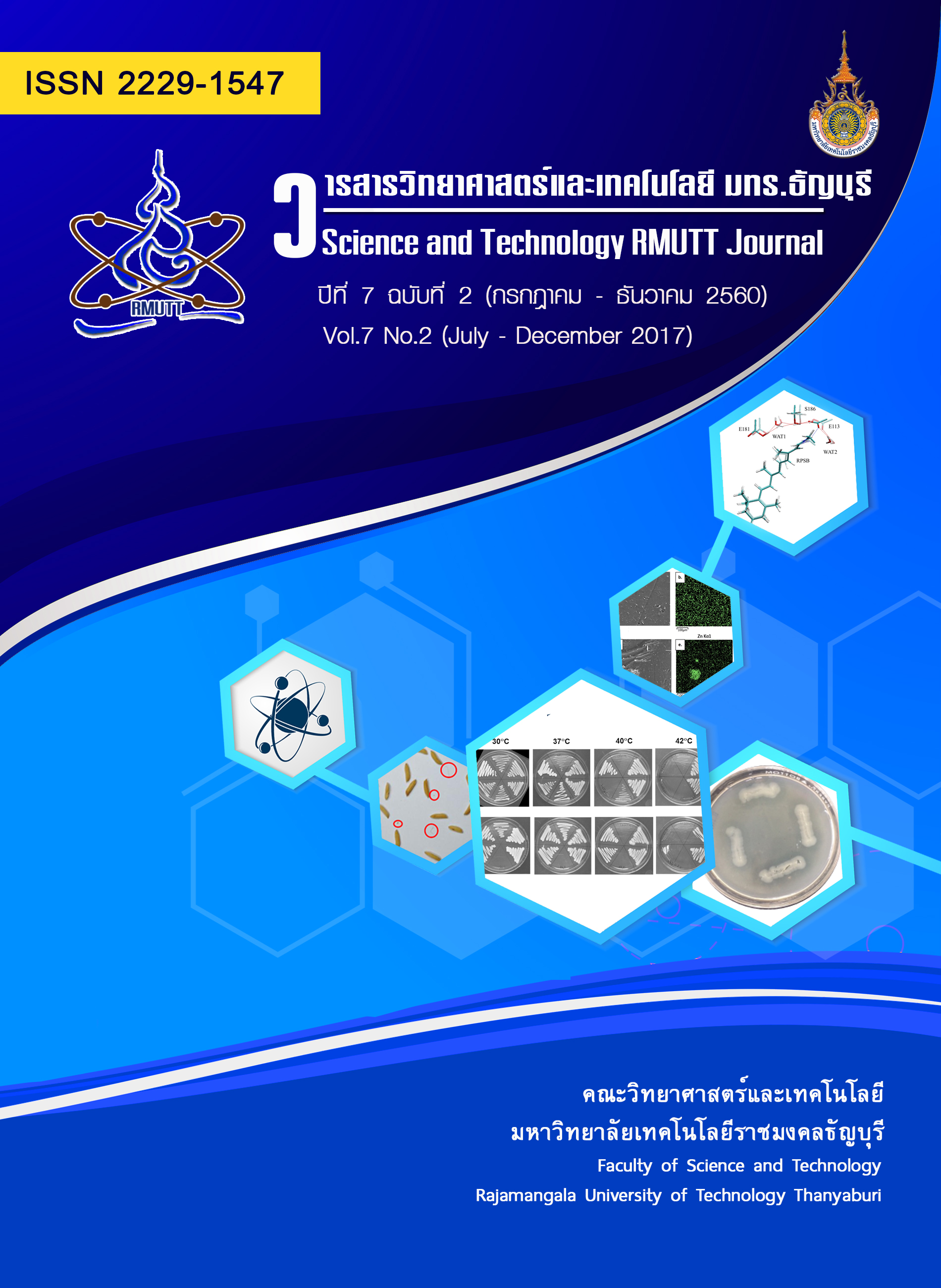Classification of Thai Rice Seed Cultivars with Image Processing
Main Article Content
Abstract
A good quality of rice seed cultivars is the first and most important factor to improve efficiency and reduce cost of rice production. Classification of rice seed from a vast variety of cultivars in Thailand is a challenge task. It requires a sharp visual inspection from only a handful of experts. The evaluation process is tedious and time consuming; moreover, the decision making capabilities of grain inspector can be seriously affected by physical condition such as fatigue, eyesight or even by mental state. The objectives of this research were to study physical features of rice seed cultivars from photographed rice images and to construct an image processing method for classification. Two rice cultivars; RD 49 and RD 6, were used to test the accuracy of classification method. The following percentages of RD 49 rice seeds were mixed into RD 6 seeds at 1, 5, 10, 20 and 50%; successively and the result showed that the rate of successful classification of the two cultivars were 100, 100, 100, 100 and 96%; respectively. It was found that using color filtering and ratios of physical features could help improving the accuracy of classification. The developed method can be conveniently implemented in rice seed cultivars classification machine.
Article Details
References
Gujjar, H. S. and Siddappa, M. (2013). A Method for Identification of Basmati Rice grain of India and Its Quality Using Pattern Classification. International Journal of Engineering Research and Applications. 3: 268-273
MousaviRad S. J., Rezaee, K. and Nasr, K. i. (2012). A new method for identification of Iranian rice kernel varieties using optimal morphological features and an ensemble classifier by image processing Majlesi Journal of Multimedia Processing. 1: .1-7
Silva, C. S. and Sonnadara, U. (2013). Classification of Rice Grains Using Neural Networks. Proceedings of Technical Sessions, Sri Lanka: 29: 9-14.
Hobson, D. M. Carter, R. M. and Y. Yan. (2007). Characterisation and Identification of Rice Grains through Digital Image Analysis. Instrumentation and Measurement Technology Conference –IMTC 2007, May1-3 2007, Warsaw, Poland. IEEE: 1-5.
Liu, C. Liu, W. Lu, X. Chen, W. Yang, J. and Zheng, L. (2014). Nondestructive determination of transgenic Bacillus thuringiensis rice seeds (Oryza sativa L.) using multispectral imaging and chemometric methods. Food Chemistry 153: 87-93
Golpour, I. Parian, J. A. and Chayjan, R. A. (2014).“Identification and Classification of Bulk Paddy, Brown, and White Rice Cultivars with Colour Features Extraction using Image Analysis and Neural Network” Czech J. Food Sci. Vol. 32, 2014, No. 3: 280–287
Manickavasagan, A. Sathya, G. and Jayas, D.S. (2008). Comparison of illuminations to identify wheat classes using monochrome images. Computers and electronics in agriculture. 63: 237–244.
Hanibah, S. Khairunniza-Bejo, S. Ismail, W. and Wayayok A. (2014). Determination of physical rice composition using image processing technique. Journal of Food, Agriculture & Environment. 12 (1): 205-209.


